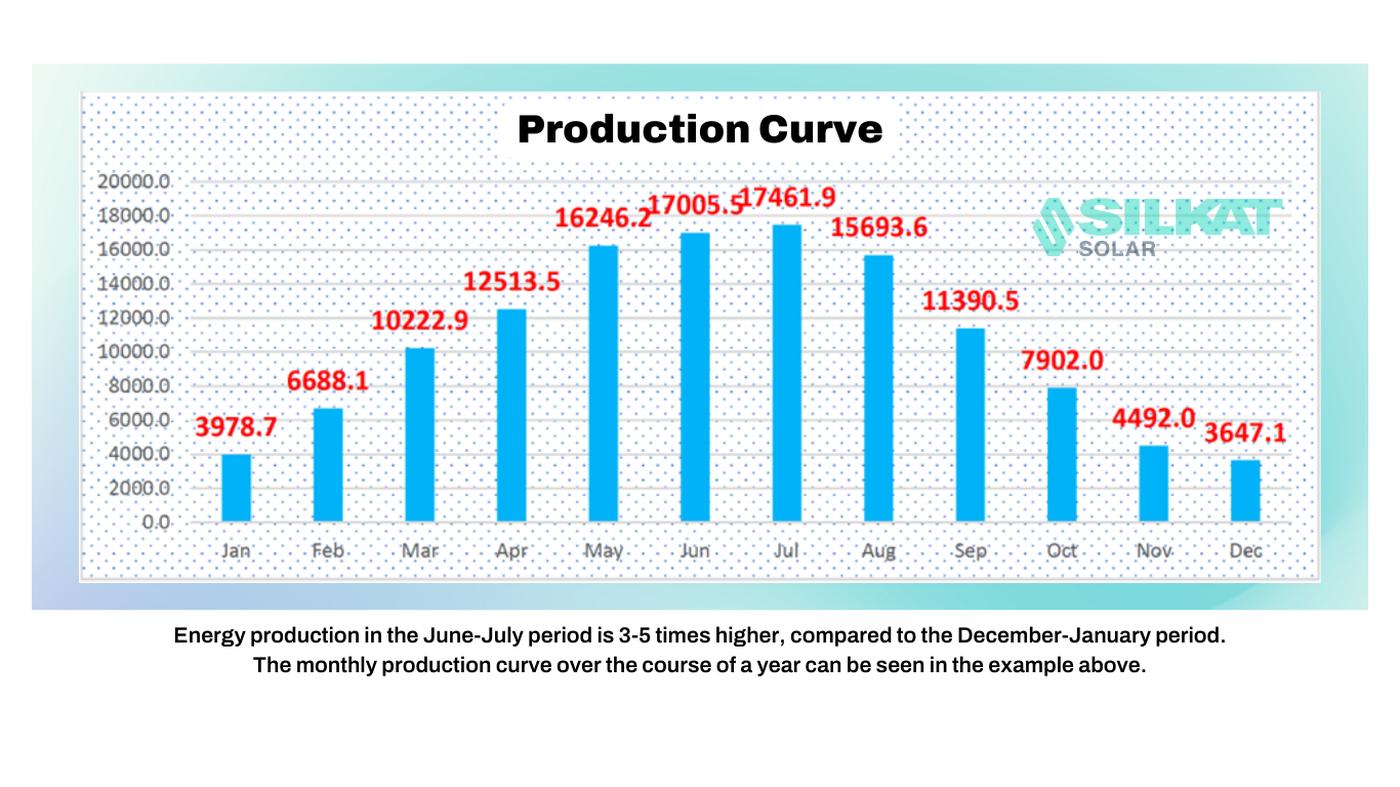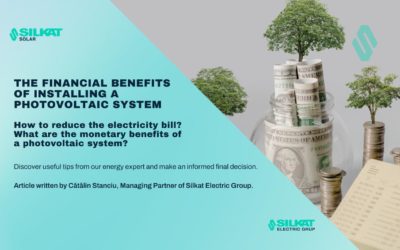The purpose of installing a photovoltaic system is to generate electrical energy. So, it’s only natural to ask, “How much energy will my photovoltaic system produce?”
However, the answer to this question would not be complete if it did not also address the question of “When will my photovoltaic system generate energy?”
Factors Influencing Energy Production
Electricity generation is the result of exposing photovoltaic panels to solar radiation, which is different from the heat emitted by the sun. Therefore, the electricity produced depends on environmental conditions and the efficiency of the system, primarily influenced by the following factors:
- Season: The longer the day, the more energy will be produced during that period.
- Latitude: Sunlight needs to strike the panels as perpendicularly as possible. As we move away from the equator, we need to tilt the panels to the optimal angle, which in Romania is around 40 degrees. Roofs with low inclinations are less efficient.
- Weather conditions: Areas with longer sunny periods have higher production, while areas with heavy snowfall will have lower production.
- Air quality: In areas with airborne particles, panels can accumulate a very thin layer of dust, reducing panel efficiency.
- Shading: It is crucial to ensure that panels are not shaded by other buildings, vegetation, chimneys, flagpoles, etc. Shading can significantly impact production, and if it is severe, the system installation might not be justified.
- Panel orientation: The ideal orientation in Romania is towards the SSE direction. Deviating from this position will result in losses.
- Panel characteristics: Panel efficiency is a key feature, with quality panels typically falling within the range of 20.5-21.7 efficiency, indicating what percentage of captured energy is converted into electricity. Higher efficiency means more energy production.
- Inverter characteristics: It’s important for the inverter to have high efficiency, meaning it efficiently converts direct current from panels into alternating current with minimal losses.
- System optimization: The system design must consider panel models, their arrangement, and the chosen inverter to maximize energy production. There are several parameters for panels and inverters, and if not evaluated properly, they can lead to deficient performance, even with high-quality individual components. !! Production losses in these situations can be considerable.
- System reliability: Naturally, systems produce energy when all components are functioning correctly. Any failure due to equipment defects or improper installation can result in periods of non-operation, meaning lost production.
I would say these are the most key factors that will affect your energy production. As an example, below are some systems with their annual productions:
| Installed Power | Annual Production |
|---|---|
| 8,1 kW | 9586 kWh |
| 11,34 kW | 13477 kWh |
| 23,49 kW | 28600 kWh |
| 450,7 kW | 542442 kWh |
You can conclude that for a correctly installed system in Romania, if you multiply the installed power in kW by 1200, you will get the annual energy quantity in kWh.
When Will a Photovoltaic System Generate Energy?
Since production results from solar radiation, it follows two cycles:
- Day and Night
- Winter and Summer
We produce energy during the day, and it’s a significant advantage when our energy consumption aligns with that period. If energy consumption at the location is mainly after sunset, the solution is to install energy storage batteries.

Due to these production differences, you must evaluate your energy consumption during each of these periods and find a system with suitable production for your home or the space where you want to install the photovoltaic system. If, in certain periods, you produce more than you consume, you will deliver the surplus to the national grid, and the uncertainty of how you will recover the energy delivered can affect your overall benefit. If you produce significantly less energy than you consume during certain periods, you’ll have an undersized system for that period.
In Conclusion
Taking into account all of the above, you can understand the annual production of a photovoltaic system based on its power and installation characteristics, as well as how much energy the system produces at different times. Understanding the details of production will help you determine how to use the system and properly size it to meet your expectations.
Misunderstanding these aspects can lead to regretting the installation of photovoltaic panels after a period of time, mainly because your expectations differed from reality. Details matter, and by considering them, you can make profitable investments that bring satisfaction.
If you want to find out how much energy your photovoltaic system will produce and when, we invite you to contact our energy expert, Cătălin Stanciu, Managing Partner at Silkat Electric Grup, at the following email address: catalin.stanciu@silkat.ro



